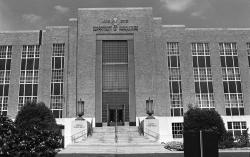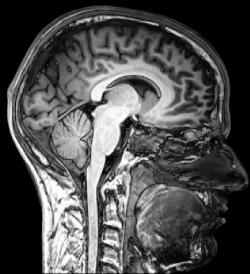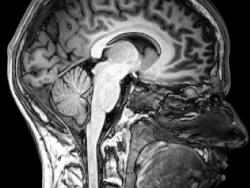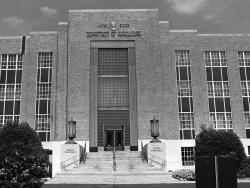By the 1950s, synthetic fabrics - often wrinkle resistant and flame retardant - began to overtake cotton as the dominant U.S. textile fiber. To reverse this trend chemists and chemical engineers at the Southern Regional Research Center initiated research to modify cotton chemically. Their efforts in developing agents that crosslinked the cellulose fibers and in establishing crosslinking mechanisms led to improved durable press fabrics. SRRC studies also developed new agents that improved the durability of flame retardant cotton to laundering.
1970s

YearAdded:
Image Credit: Photo courtesy National Archives and Records Administration. (CC BY 2.0)Image Caption: The Southern Regional Research Center in New Orleans, Louisiana in August 1985.
2004

In the early 1970s, American chemist Paul C. Lauterbur demonstrated that nuclear magnetic resonance (NMR) could be used to generate images of macroscopic objects. In the years following, magnetic resonance imaging (MRI) has been refined as a technique for the detailed resolution of internal structures. Lauterbur’s invention thus created a powerful diagnostic tool for the non-invasive examination of body tissues such as the brain, heart, and muscles. It allows for the early detection of cancer and other diseases.
YearAdded:
Image Credit: Original Image: Courtesy of Flickr/Everyone's Idle (CC BY-SA 2.0)Image Caption: NMR and MRI: Applications in Chemistry and MedicineEra_date_from: 1970s
2011
Innovations

In the early 1970s, American chemist Paul C. Lauterbur demonstrated that nuclear magnetic resonance (NMR) could be used to generate images of macroscopic objects. In the years following, magnetic resonance imaging (MRI) has been refined as a technique for the detailed resolution of internal… Read More

By the 1950s, synthetic fabrics - often wrinkle resistant and flame retardant - began to overtake cotton as the dominant U.S. textile fiber. To reverse this trend chemists and chemical engineers at the Southern Regional Research Center initiated research to modify cotton chemically. Their…
Read More

